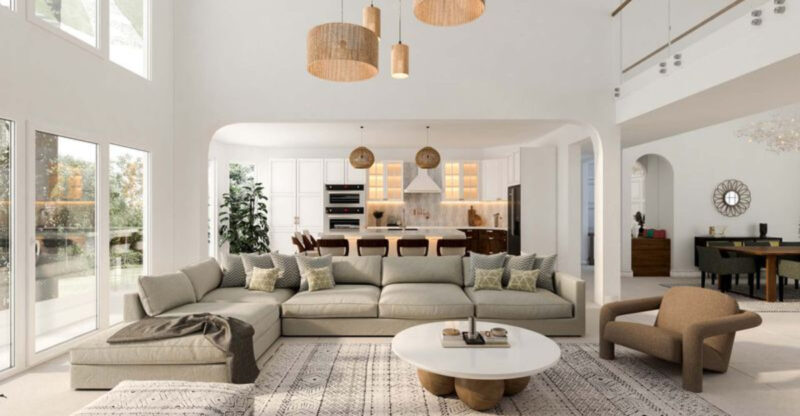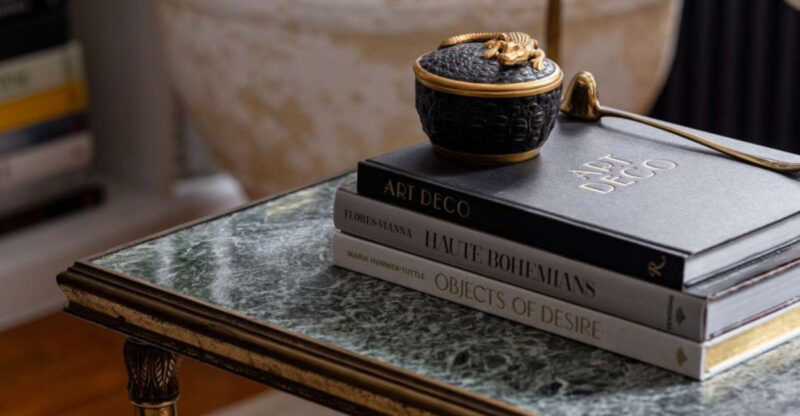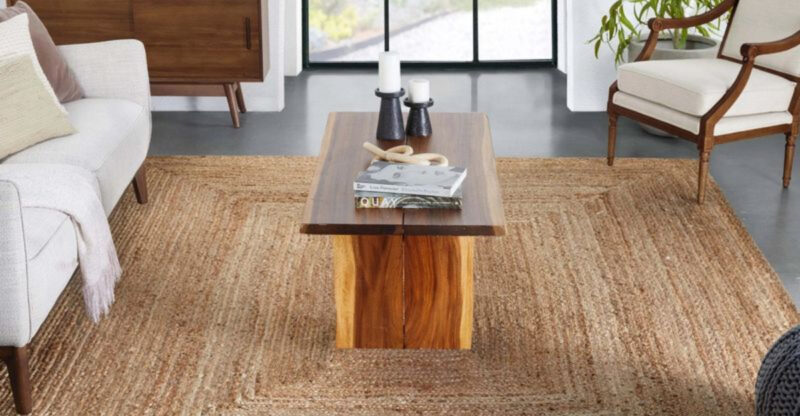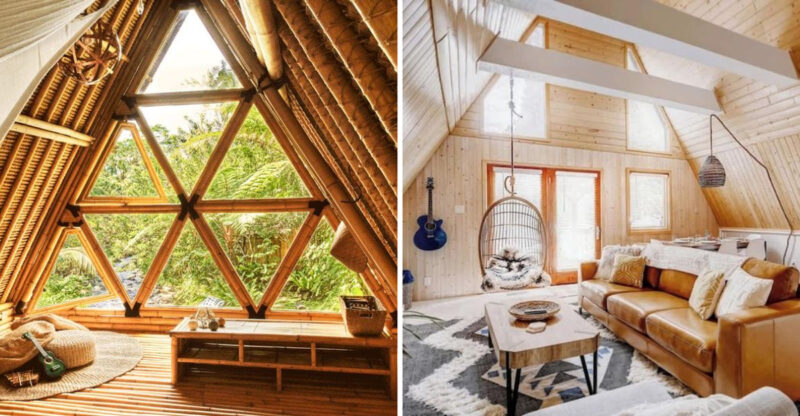10 Sneaky Details That Make Your Home Feel Messy And 8 That Should Never Be There
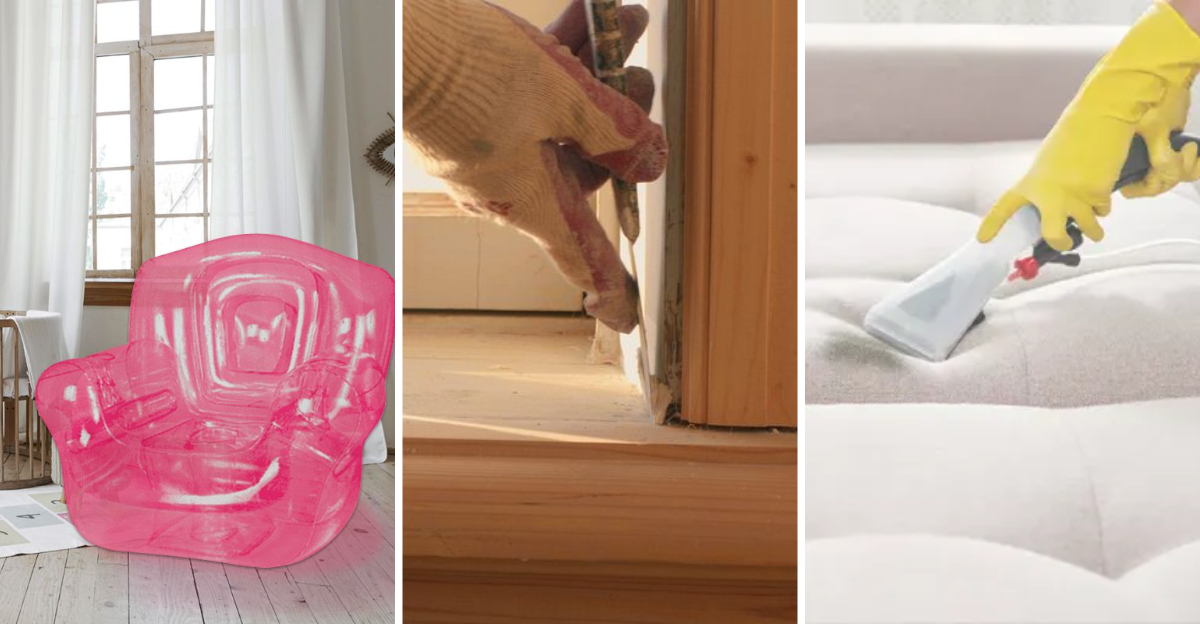
Ever walked into your home and felt it looked messy even after cleaning? Small, overlooked details could be the culprits behind that cluttered feeling.
These sneaky elements lurk in corners, on walls, and across countertops, subtly creating visual chaos without you even realizing it.
Let’s explore ten details making your home feel messy and eight items that should be permanently banished for a cleaner, more peaceful living space.
1. Cords Hanging from Counters
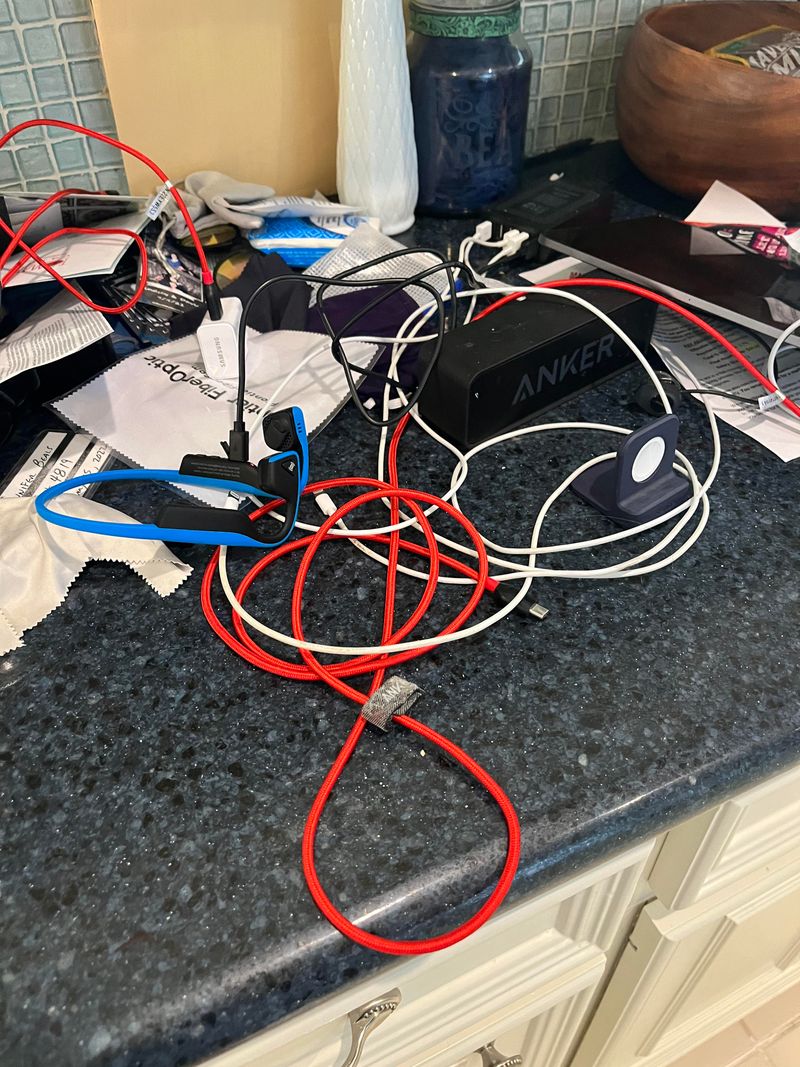
Tangled charging cables and appliance cords create instant visual chaos in any room. When multiple wires dangle from kitchen counters or entertainment centers, they immediately signal disorganization even if everything else is spotless.
The solution isn’t complicated invest in simple cord organizers or cable clips that attach to surfaces. These inexpensive fixes keep wires bundled together and out of sight. For areas with multiple electronics, consider a charging station that contains all cords in one designated spot.
Another clever trick: use decorative boxes with small holes cut in the back to hide power strips and excess cord length. This transforms unsightly tech necessities into intentional decor pieces while maintaining functionality.
2. Cluttered Entryway Tables
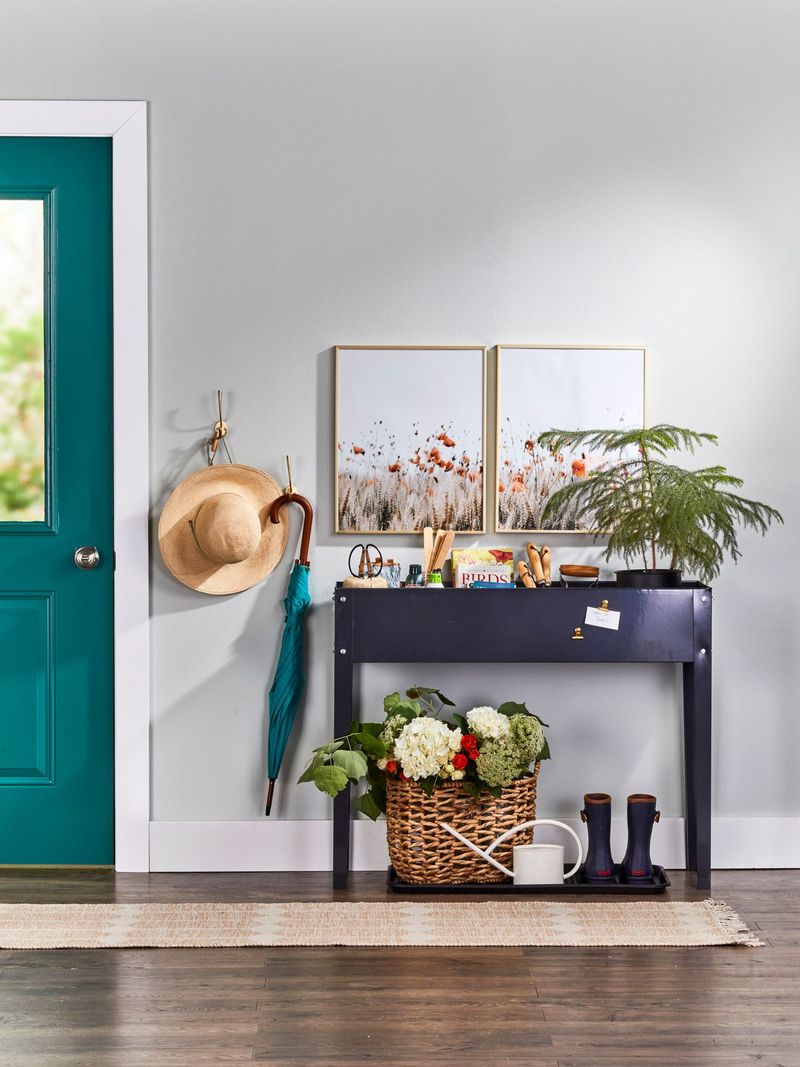
Your entryway creates the first impression of your home, yet often becomes a dumping ground for everyday items. Keys, mail, receipts, and random objects pile up, transforming this space into chaos central within days of cleaning.
Creating a functional system makes all the difference. Install hooks for keys and bags at eye level, and use attractive baskets to corral smaller items. Designate specific spots for mail, school papers, and other daily clutter that tends to accumulate.
The magic happens when you implement a five-minute daily reset routine. Taking moments each evening to return items to their proper homes prevents the snowball effect of entryway clutter and maintains your home’s welcoming vibe.
3. Dusty Baseboards

Few things signal neglect faster than grimy, dust-coated baseboards lurking at the edges of your rooms. Though we rarely look directly at them, our brains register their dingy appearance, creating an unconscious impression of uncleanliness throughout the space.
Cleaning baseboards doesn’t require special equipment just a microfiber cloth and your regular all-purpose cleaner work wonders. For extra dusty situations, a vacuum attachment helps remove the initial layer before wiping. The real secret is maintenance, not deep cleaning.
Once your baseboards shine, keep them that way with a quick monthly wipe-down. This simple habit prevents buildup and eliminates one of the most overlooked sources of that mysterious “something’s not clean” feeling in otherwise tidy homes.
4. Overfilled Open Shelves
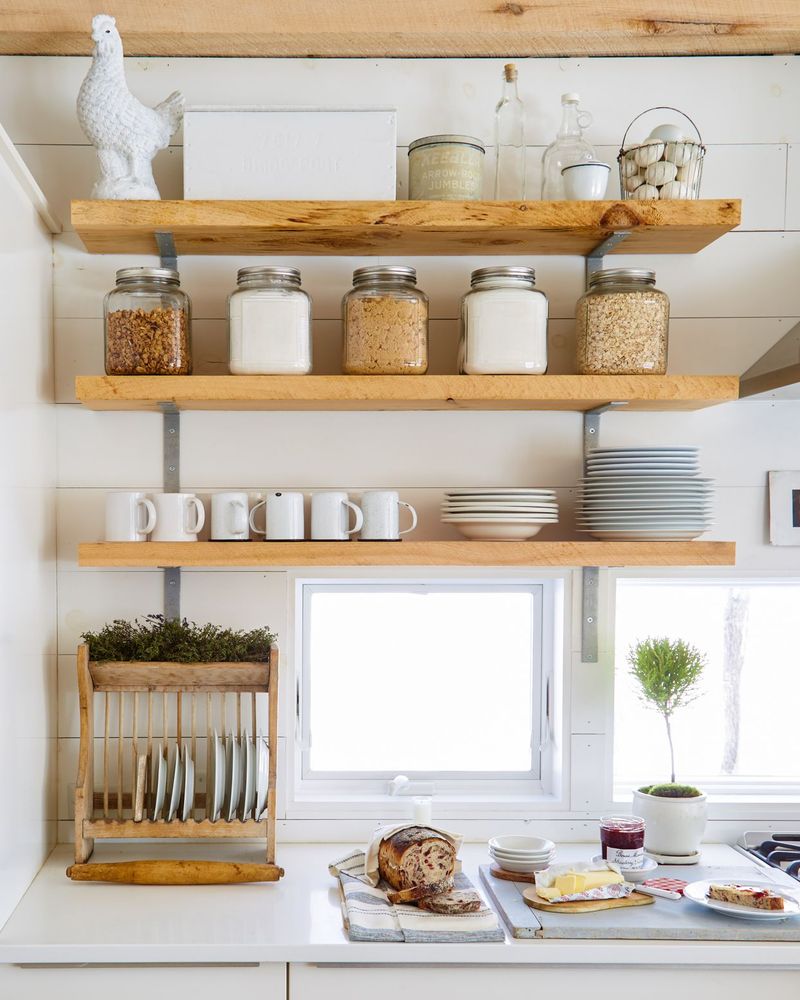
Open shelving looks stunning in design magazines but quickly becomes an eyesore when stuffed with mismatched items. When every inch gets crammed with objects of different heights, colors, and purposes, the visual effect reads as chaotic rather than curated.
The key to beautiful open shelving is intentional negative space. Allow breathing room between items and group similar objects together. Limit your color palette to create cohesion, and resist the urge to display every sentimental trinket you own.
Try the “remove half” rule when styling shelves: arrange everything you think belongs, then remove 50% of it. This ruthless editing creates the balanced, attractive displays seen in professionally designed homes and instantly makes your space feel more organized.
5. Sloppy Throw Blanket Placement
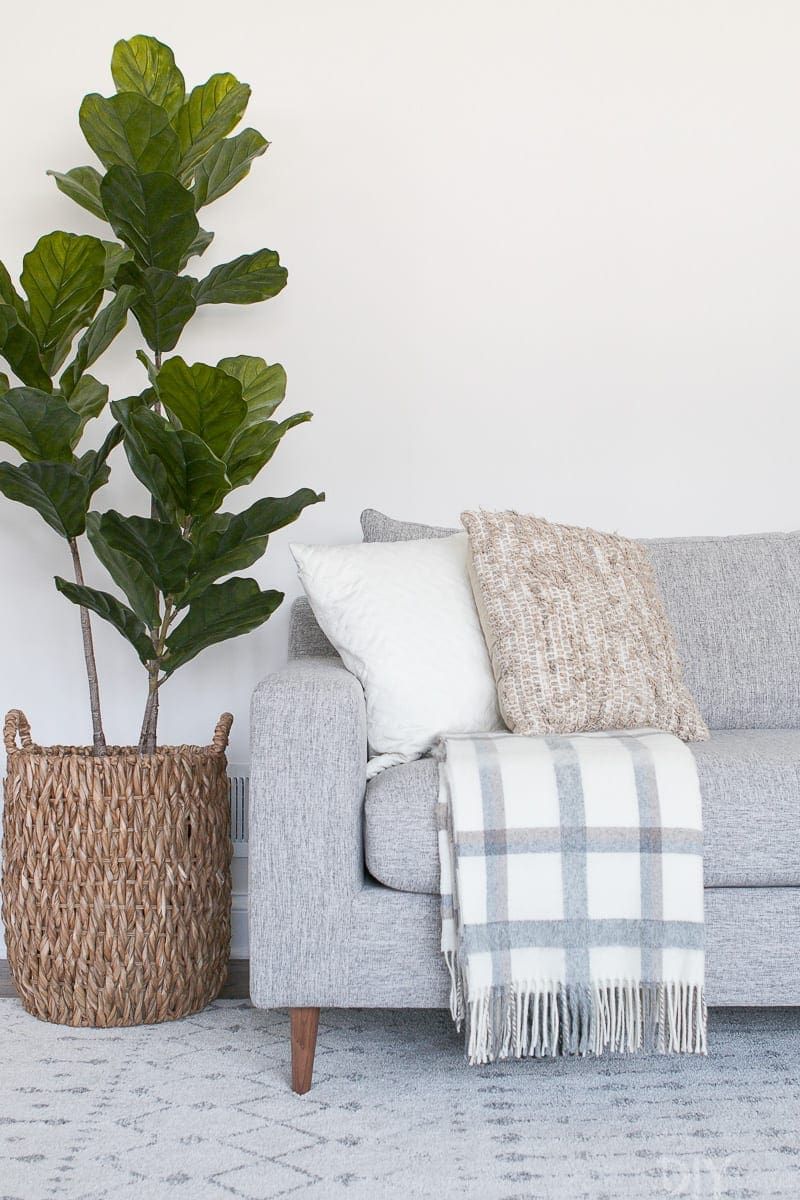
Casually tossed throw blankets might seem like a minor detail, but they dramatically impact how put-together a room feels. When blankets lie in rumpled heaps or hang haphazardly off furniture edges, they create an immediate impression of disorder.
Learning the art of the “casual fold” transforms these comfort items into intentional design elements. The simplest method involves folding the blanket into thirds lengthwise, then draping it over a sofa arm or the back of a chair. For extra style points, try the store display technique of folding into a neat rectangle, then draping it diagonally across a corner.
If folding feels too fussy for your lifestyle, decorative baskets provide the perfect solution simply toss blankets inside when not in use for instant organization.
6. Crooked Wall Art
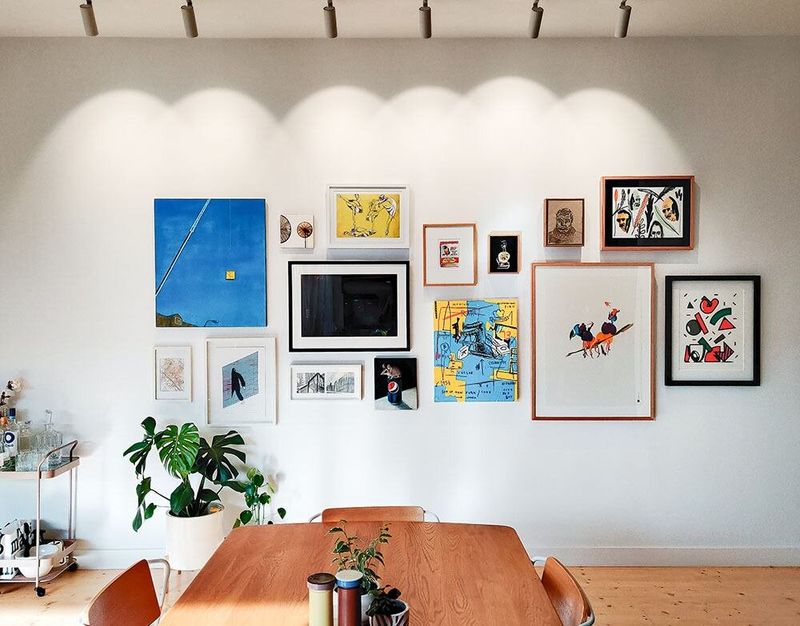
Misaligned frames and canvases create subtle visual tension that registers as messiness even when everything else looks perfect. Our brains naturally seek symmetry and straight lines, making crooked art particularly jarring to our sense of order.
Fixing this issue requires minimal effort with maximum impact. Adhesive-backed level strips or small rubber bumpers applied to frame corners prevent the gradual tilting that happens over time. For a tech solution, try picture hanging apps that use your phone’s sensors to ensure perfect alignment.
When hanging multiple pieces, use kraft paper templates taped to the wall first to experiment with placement. This extra step saves your walls from multiple nail holes and guarantees a polished gallery wall that stays perfectly aligned, instantly elevating your home’s appearance.
7. Scuffed Door Frames
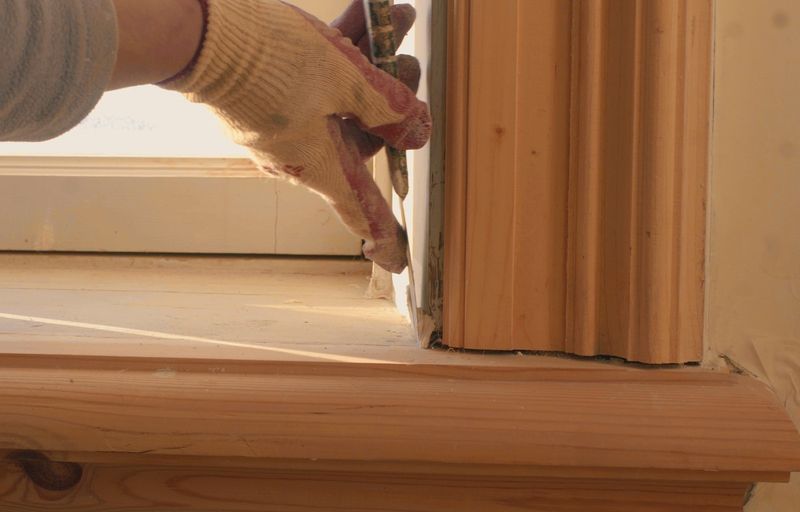
Door frames bear the brunt of daily life, collecting scuffs, scratches, and grimy fingerprints that we eventually stop noticing. These marks create a subliminal impression of wear and neglect, making rooms feel dingier than they actually are.
A magic eraser sponge works wonders on most door frame marks without damaging paint. For deeper scuffs, touch-up paint applied with a small artist’s brush blends seamlessly. Consider keeping a labeled container with touch-up paint for each room to make quick fixes effortless.
If your frames show extensive damage, painting the entire frame provides dramatic before-and-after results. Fresh, clean door frames instantly brighten connecting spaces and create a more polished transition between rooms a small detail with outsized impact on your home’s overall appearance.
8. Random Piles of Mail

Mail has a magical ability to multiply and migrate throughout our homes, creating disorganized piles on counters, tables, and any flat surface. These paper stacks instantly broadcast “chaos” even when surrounding areas remain tidy.
Creating a dedicated mail station transforms this daily influx into a manageable system. Use a decorative sorting box with separate compartments for bills, personal correspondence, and items requiring action. The key habit: process mail immediately upon entering your home rather than creating “I’ll deal with it later” piles.
Digital solutions also help tame paper chaos apps that scan and organize documents let you recycle physical mail while maintaining digital records. This combination of physical organization and digital tools eliminates one of the most persistent sources of visual clutter in modern homes.
9. Dirty Light Switch Plates

Grimy fingerprints on light switches create an instant impression of uncleanliness that’s surprisingly powerful. These frequently-touched surfaces collect oils, dirt, and makeup residue that builds up gradually until switches look permanently dingy.
Cleaning switch plates takes seconds but delivers outsized impact. A microfiber cloth dampened with all-purpose cleaner removes most buildup, while a cotton swab dipped in cleaner reaches corners and crevices. For plastic plates with stubborn stains, a magic eraser sponge works miracles without damaging the surface.
If cleaning doesn’t restore switches to their former glory, replacing them costs just a few dollars and requires minimal DIY skills. Fresh, clean switch plates provide that elusive “everything feels cleaner” effect that transforms rooms without major renovation or expense.
10. Forgotten Corner Cobwebs
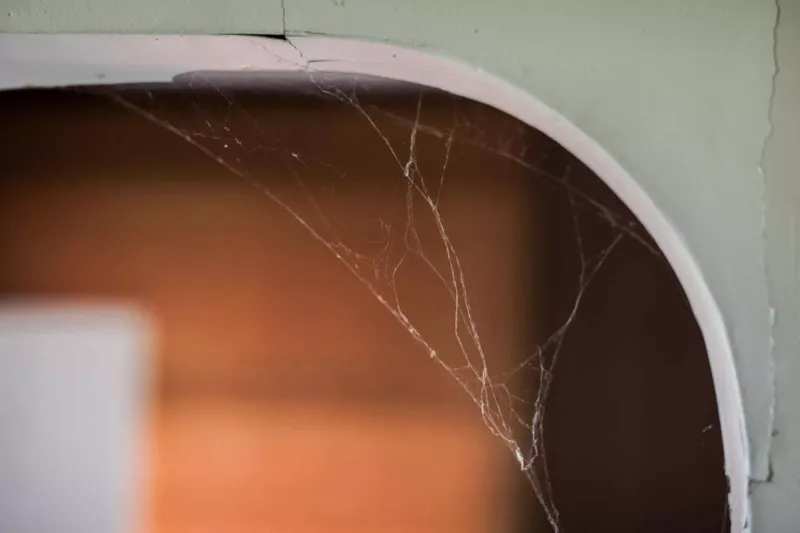
High ceiling corners collect delicate spider webs that often escape notice during regular cleaning routines. These wispy strands might seem insignificant, but they immediately signal neglect to visitors and create that nagging “something’s off” feeling when you enter a room.
A simple extendable duster with a microfiber head makes quick work of ceiling cobwebs without requiring ladders or acrobatics. Make ceiling checks part of your weekly routine by simply looking up before vacuuming – this five-second habit prevents web accumulation.
For persistent spider issues, consider natural deterrents like essential oils (peppermint works particularly well) sprayed in prone areas. Regular attention to these overlooked spaces dramatically improves your home’s overall cleanliness impression without requiring significant time or specialized cleaning products.
11. Plastic Slipcovers (Should Never Be There)
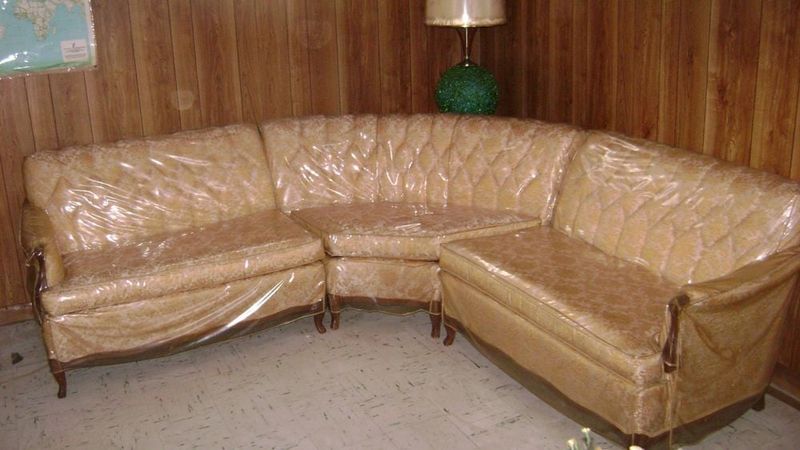
Plastic furniture covers might seem practical, but they transform comfortable seating into sweaty, noisy barriers between you and relaxation. These outdated protectors create an unwelcoming atmosphere that screams “this room is for looking, not living.”
Modern fabric protection has evolved dramatically, offering invisible sprays and treatments that repel liquids and stains without changing furniture texture. Performance fabrics now come standard on many new pieces, designed specifically to withstand real-life messes while maintaining comfort.
If furniture protection remains a concern, opt for washable slipcovers in natural fabrics that maintain breathability and comfort. These alternatives preserve your furniture investment while creating inviting spaces people actually want to use the true purpose of home furnishings in the first place.
12. Outdated Wall Decals (Should Never Be There)

Those inspirational phrases and decorative decals that seemed trendy years ago now date your space instantly. “Live, Laugh, Love” and similar wall declarations have become visual shorthand for outdated decor that lacks personality and originality.
Removing vinyl decals requires patience but minimal tools a hairdryer on low heat softens the adhesive while you gently peel from one corner. Any residue disappears with a bit of oil (olive or coconut works well) followed by gentle cleaning with soapy water.
Replace generic decals with art that genuinely reflects your personality and interests. Even simple framed photographs or prints create more sophisticated, timeless appeal than mass-produced wall phrases. This single change dramatically updates rooms and creates spaces that feel authentically yours rather than copied from decade-old design trends.
13. Broken Blinds (Should Never Be There)
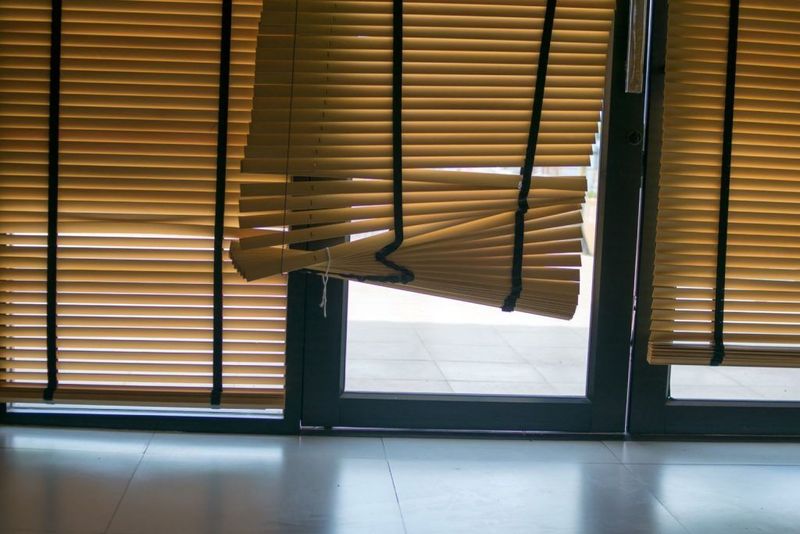
Bent, broken window blinds with missing slats create an immediate impression of neglect that undermines even the most carefully decorated rooms. These damaged window treatments signal “I don’t care enough to fix this” to everyone who enters your space.
Replacing basic blinds costs surprisingly little many standard sizes run under $30 at big box stores. Installation typically requires just a screwdriver and 15 minutes, making this one of the highest-impact, lowest-effort home improvements available.
If budget allows, consider upgrading to cordless models that offer cleaner aesthetics and improved safety for homes with children or pets. This small investment dramatically transforms how rooms look from both inside and outside your home, instantly elevating curb appeal and interior appearance with minimal time and financial investment.
14. Inflatable Furniture (Should Never Be There)
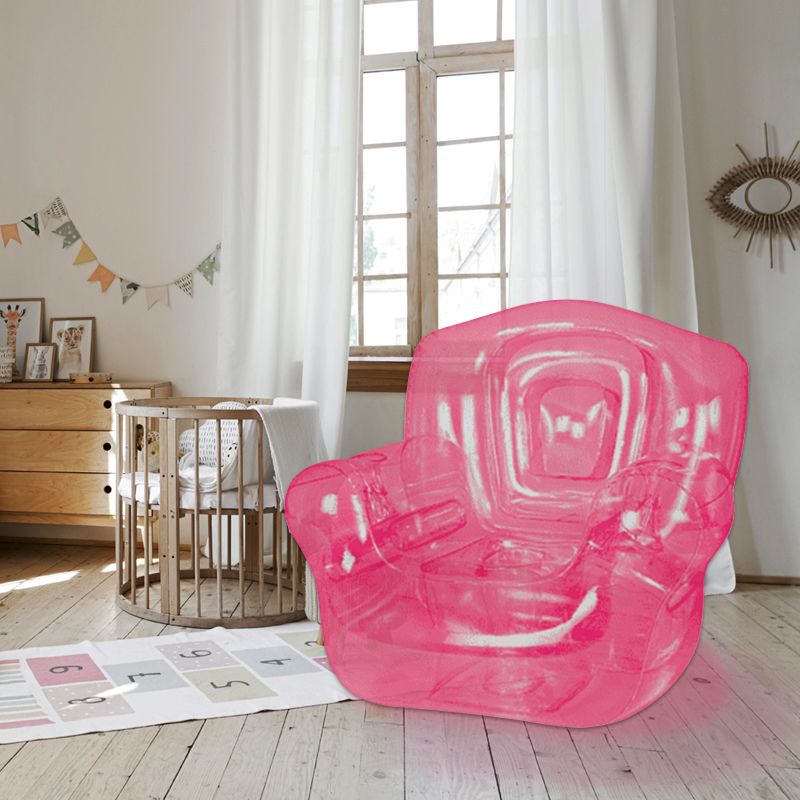
Inflatable chairs and sofas belong at pool parties and dorm rooms, not in adult living spaces trying to convey permanence and comfort. These temporary seating solutions squeak, deflate unpredictably, and create a distinctly unfinished atmosphere in any room.
Even on the tightest budget, better alternatives exist. Second-hand furniture stores, online marketplaces, and end-of-season clearance sales offer real furniture at similar price points. Look for simple, clean-lined pieces in neutral colors that can transition between different decorating styles as your taste evolves.
If space constraints drive your inflatable furniture choices, explore purpose-built solutions like storage ottomans, folding chairs, or compact loveseats designed for small spaces. These alternatives offer genuine comfort and stability while still addressing the practical concerns that led to inflatable purchases.
15. Torn Bean Bags (Should Never Be There)
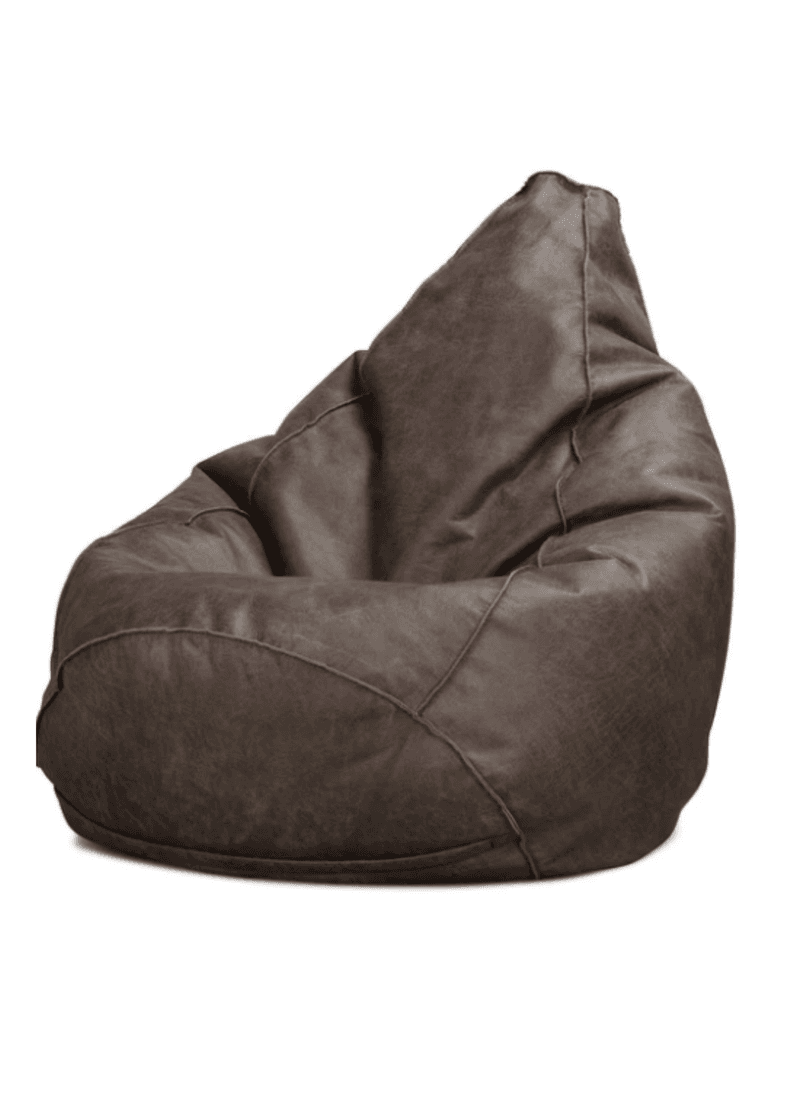
Leaking bean bags spread tiny foam beads throughout your home like indoor environmental glitter impossible to completely eliminate once escaped. These casual seating options quickly transform from fun to frustrating when their covers inevitably tear at seams or wear thin from use.
The constant cleanup and vacuum-clogging beads make torn bean bags more trouble than they’re worth. If you love the casual vibe, consider structured floor pillows or pouf ottomans filled with foam or fabric scraps that won’t escape and multiply across your floors.
Modern alternatives like memory foam loungers or structured gaming chairs provide the relaxed seating experience without the maintenance nightmares. These upgrades cost more initially but save countless hours of hunting microscopic beads and provide significantly improved comfort and support for lounging sessions.
16. Stained Upholstery (Should Never Be There)

Visibly soiled sofas and chairs broadcast neglect regardless of how clean the rest of your space might be. These conspicuous stains become the focal point of any room, drawing attention away from your carefully chosen decor and toward evidence of spills past.
Many upholstery stains respond well to DIY treatments when addressed promptly. For set-in stains, professional cleaning often costs less than you might expect typically $100-200 for a standard sofa, far less than replacement. When professional cleaning fails, slipcovers offer affordable transformation without requiring new furniture purchase.
If replacement becomes necessary, invest in performance fabrics specifically engineered to resist staining. These modern textiles repel liquids and clean easily with soap and water, preventing future stains from becoming permanent features in your living space.
17. Misused Outdoor Chairs Indoors (Should Never Be There)
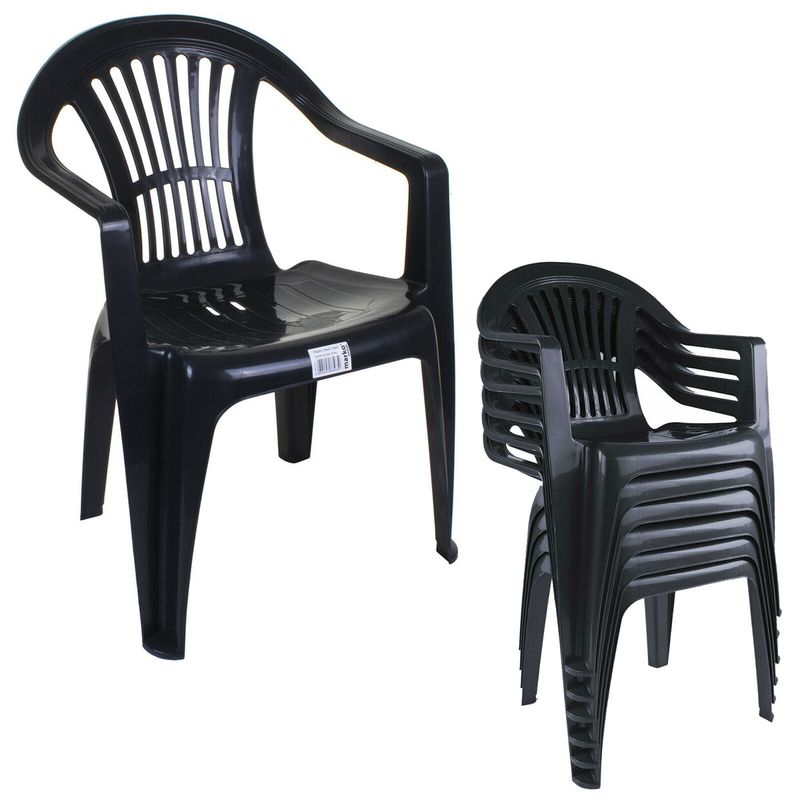
Plastic patio chairs and metal folding seats create an impression of temporary arrangements rather than thoughtful design when used as primary indoor seating. These outdoor pieces weren’t designed for extended indoor comfort or aesthetic cohesion with interior spaces.
Budget constraints don’t have to mean sacrificing indoor-appropriate seating. Second-hand stores often sell dining chairs for $10-20 each, while online marketplaces frequently list complete dining sets for under $100. These alternatives provide proper support and visual consistency without breaking the bank.
If temporary extra seating drives your outdoor chair use, consider collapsible options specifically designed for indoor aesthetics. Modern folding chairs come in stylish finishes that blend with permanent furniture when needed, then store compactly until your next gathering requires additional seating capacity.
18. Old Carpet Squares (Should Never Be There)

Mismatched, stained carpet tiles create a patchwork effect that never reads as intentional design. These modular flooring pieces often curl at edges, collect dirt at seams, and fade unevenly, drawing attention to your floors for all the wrong reasons.
Replacing carpet tiles doesn’t require professional installation or enormous expense. Peel-and-stick vinyl planks offer affordable DIY-friendly alternatives that mimic the look of hardwood or stone. These modern options install directly over most existing floors and resist water damage and staining far better than carpet squares.
If budget constraints prevent complete replacement, consider large area rugs that cover the majority of carpet tiles. This strategy hides damaged sections while adding color and texture to your space a temporary solution that dramatically improves appearance while you save for permanent flooring upgrades.

